The following individuals who have received significant grants and awards conferred by external agencies in 2021 have brought great distinction to the University of Windsor:
Tier 1 Canada Research Chair Renewal
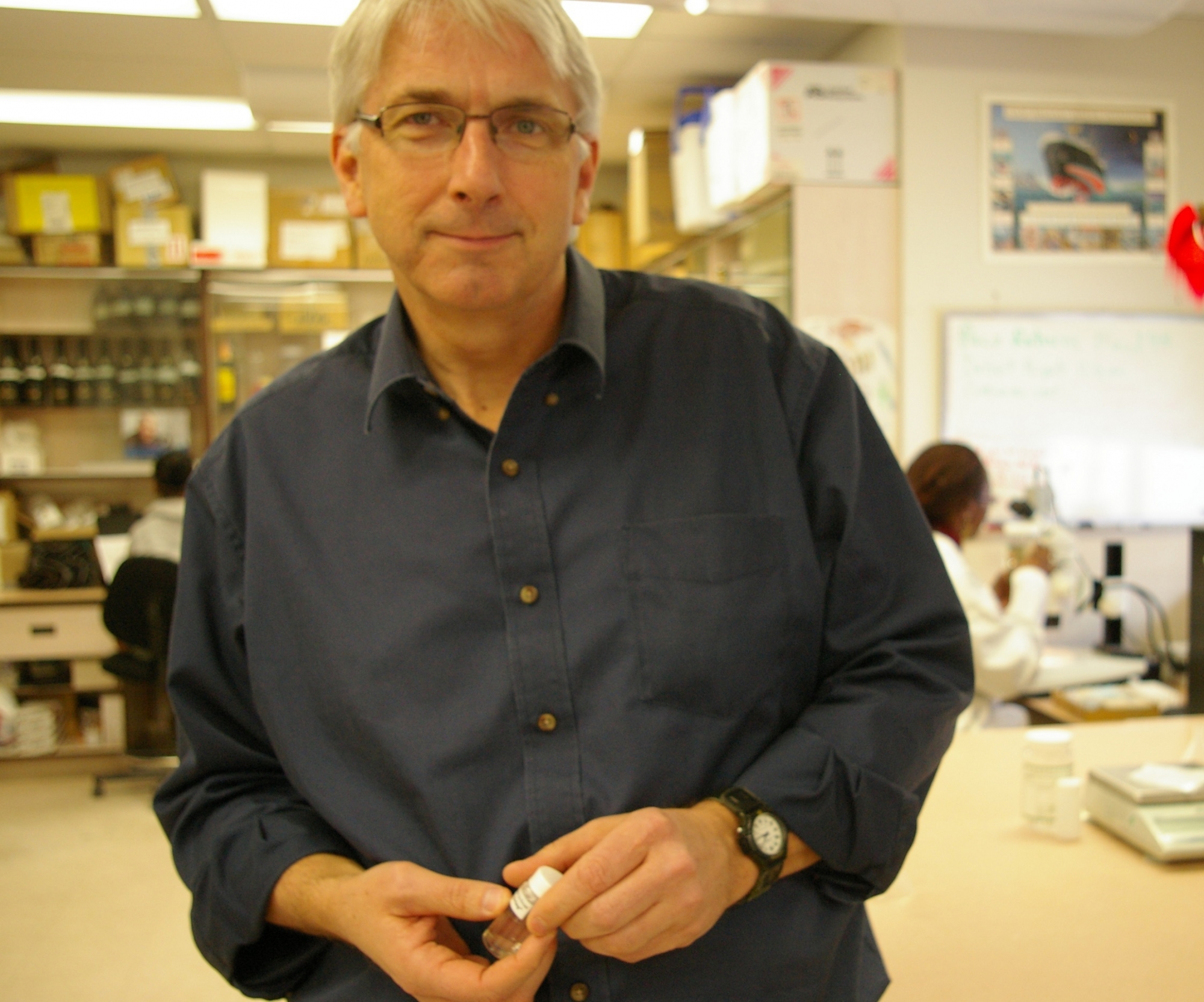 Dr. Hugh MacIsaac of the Great Lakes Institute for Environmental Research had his Tier 1 Canada Research Chair in Aquatic Invasive Species renewed for a second term.
Dr. Hugh MacIsaac of the Great Lakes Institute for Environmental Research had his Tier 1 Canada Research Chair in Aquatic Invasive Species renewed for a second term.
Alien species are among the greatest ecological problems affecting global biodiversity today. The Great Lakes have been invaded by at least 180 alien species, while our costal marine ecosystems face an increasing number of harmful invasions. These alien species disrupt foodwebs and harm economic resources. Canada has placed a very high priority on preventing introduction of new alien species, and on early detection programs when prevention fails. Early detection of aquatic invaders is very difficult. However, because initial population numbers are typically very low and because visibility of species is less apparent in aquatic environments.
Dr. MacIsaac’s Tier 1 Canada Research Chair program explores use of molecular techniques to detect the entire species complement present in vulnerable ecosystems across Canada. These techniques rely on identification of species by their species-specific DNA patterns rather than traditional methods that use microscopy. DNA extracted from water samples collected from ports is amplified and sequenced. DNA sequences are compared to reference databases, allowing for species determination.
The risk of a successful invasion is determined both by the number of alien species introduced and by their abundance when released – often by ships – into Canadian waters. Dr. MacIsaac is studying these relationships through experiments using ballast water from ships arriving in Canadian ports. His efforts focus on the relative importance of these two parameters and the identification of ships and shipping routes that pose the greatest threat of new species introductions.
Ultimately, Dr. MacIsaac’s Tier 1 Canada Research Chair program will allow for the more effective management of ships arriving in Canada to reduce the overall number of alien species that successfully colonize Canadian waters.
Tier 2 Canada Research Chair
 Dr. Ning Zhang of the Department of Electrical and Computer Engineering was awarded a Tier 2 Canada Research Chair in Edge Computing and Internet of Vehicles.
Dr. Ning Zhang of the Department of Electrical and Computer Engineering was awarded a Tier 2 Canada Research Chair in Edge Computing and Internet of Vehicles.
The Internet of Vehicles (IoV) is a wireless network used to exchange information between vehicles, infrastructure, and pedestrians using smart devices and sensors inside and outside of vehicles. By providing information to support decision-making, the IoV can improve road safety and efficiency. But to work properly, it depends on timely data acquisition and processing.
Through his innovative research program, Dr. Zhang is investigating mobile edge computing, in which roadside edge servers cache data content and execute different computational tasks for vehicles. This will reduce latency in content delivery and data processing. He and his research team are also developing intelligent systems for caching and delivering content, scheduling computational tasks, and managing AI-aided resources to ensure vehicles can access the data needed to complete computational tasks in real time.
Canada Foundation for Innovation, John R. Evans Leaders Fund and Ministry of Colleges and Universities, Ontario Research Fund - Research Infrastructure (Small Infrastructure) Grant
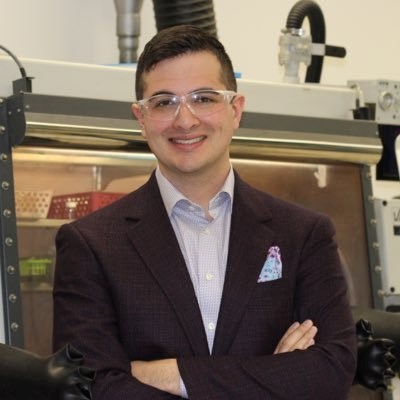
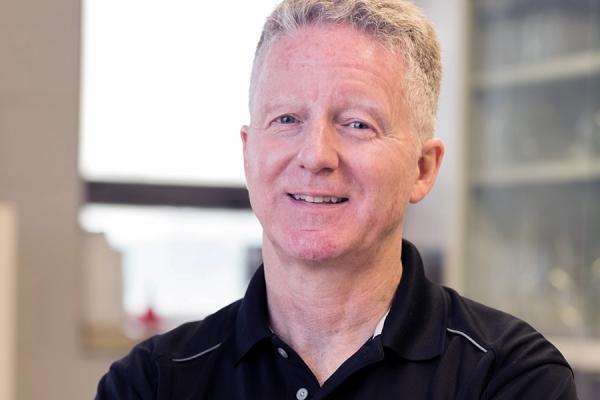 Drs. Marcus Drover, Stephen Loeb, and Jeremy Rawson of the Department of Chemistry and Biochemistry were awarded a Canada Foundation for Innovation, John R. Evans Leaders Fund and Ministry of Colleges and Universities, Ontario Research Fund – Research Infrastructure (Small Infrastructure) Grant for their project entitled, Infrastructure for Clean Energy Research: Innovative Studies on Novel Catalysts for Small-Molecule Fixation. Bridging the traditional limits of synthetic inorganic and materials chemistry, this team aims to develop new functional molecules that promote the equitable use of energy-related resources, including hydrogen, carbon, nitrogen, and oxygen cycles. These advancements will be used to generate new materials that can be employed for application in energy and sustainability science. The projects supported by this infrastructure grant are unique in Canada and promise to push forward the priorities of our federal government, developing sustainable chemistry for energy research as a means of protecting our natural world.
Drs. Marcus Drover, Stephen Loeb, and Jeremy Rawson of the Department of Chemistry and Biochemistry were awarded a Canada Foundation for Innovation, John R. Evans Leaders Fund and Ministry of Colleges and Universities, Ontario Research Fund – Research Infrastructure (Small Infrastructure) Grant for their project entitled, Infrastructure for Clean Energy Research: Innovative Studies on Novel Catalysts for Small-Molecule Fixation. Bridging the traditional limits of synthetic inorganic and materials chemistry, this team aims to develop new functional molecules that promote the equitable use of energy-related resources, including hydrogen, carbon, nitrogen, and oxygen cycles. These advancements will be used to generate new materials that can be employed for application in energy and sustainability science. The projects supported by this infrastructure grant are unique in Canada and promise to push forward the priorities of our federal government, developing sustainable chemistry for energy research as a means of protecting our natural world.
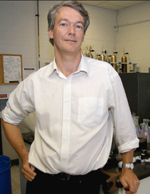
Ministry of Agriculture, Food and Rural Affairs - A Place to Grow: Agri-Food Innovation Initiative Grant
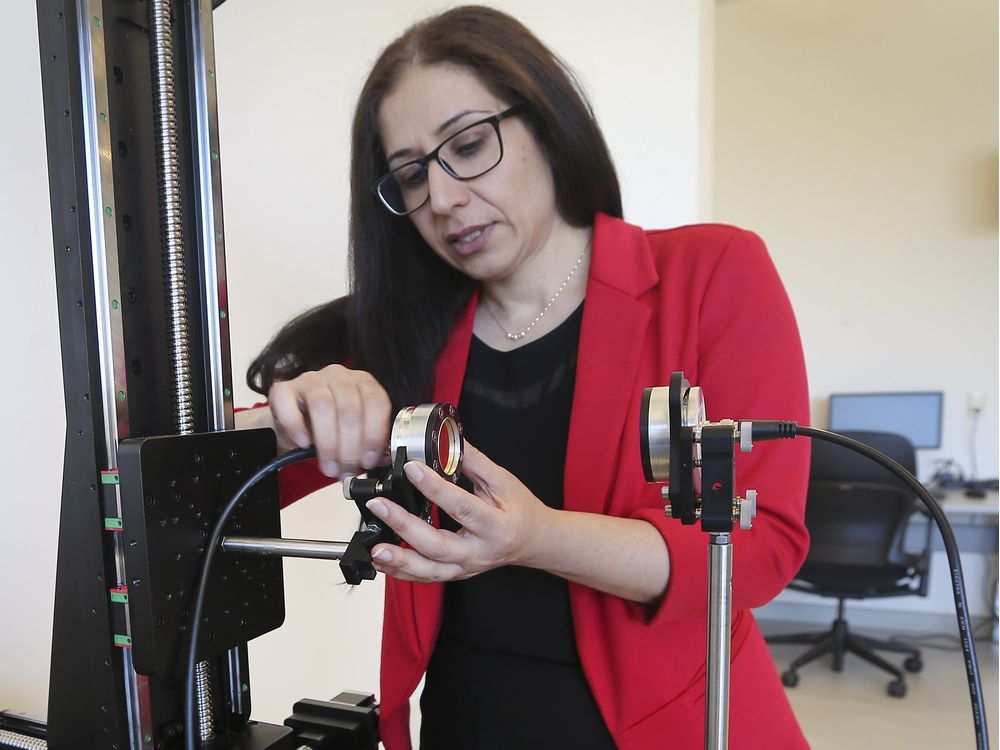 Dr. Arezoo Emadi from the Department of Electrical and Computer Engineering was awarded A Place to Grow: Food Innovation Initiative Grant or her project entitled, An electronic nose integrated sniffer system for early pest detection. Dr. Emadi is designing an innovative integrated and portable electronic nose system that can detect the chemical signatures of pests and identify early-stage pest contamination undetectable by human senses. Detection of airborne chemical compounds as a unique response pattern of the target pests mimics the mammalian olfactory system action of “sniffing”. This technology can be developed and adapted for detection of a wide variety of pests and trace indicators of disease in a fast and cost-effective manner that provides an cutting-edge solution for greenhouse integrated pest management systems. The technology being developed by Dr. Emadi overcomes limitations of traditional inspection by employing novel microfabrication techniques to develop a portable detection system that accommodates arrays of chemical sensors. The arrays of microscale sensors are coated with receptor-like materials and fabricated on an integrated platform along with read-out circuitry. A micropump is incorporated in the system to eliminate the measurement temperature dependency and widen the operating range of the detection system. Using the proposed method, sensor responses to the identifying chemical compounds will be collected under controlled conditions, transferred wirelessly, analysed, and processed using machine learning techniques. Through this innovative technology, Dr. Emadi is providing greenhouse vegetable growers with a novel system for autonomous, integrated, portable, and affordable greenhouse pest management.
Dr. Arezoo Emadi from the Department of Electrical and Computer Engineering was awarded A Place to Grow: Food Innovation Initiative Grant or her project entitled, An electronic nose integrated sniffer system for early pest detection. Dr. Emadi is designing an innovative integrated and portable electronic nose system that can detect the chemical signatures of pests and identify early-stage pest contamination undetectable by human senses. Detection of airborne chemical compounds as a unique response pattern of the target pests mimics the mammalian olfactory system action of “sniffing”. This technology can be developed and adapted for detection of a wide variety of pests and trace indicators of disease in a fast and cost-effective manner that provides an cutting-edge solution for greenhouse integrated pest management systems. The technology being developed by Dr. Emadi overcomes limitations of traditional inspection by employing novel microfabrication techniques to develop a portable detection system that accommodates arrays of chemical sensors. The arrays of microscale sensors are coated with receptor-like materials and fabricated on an integrated platform along with read-out circuitry. A micropump is incorporated in the system to eliminate the measurement temperature dependency and widen the operating range of the detection system. Using the proposed method, sensor responses to the identifying chemical compounds will be collected under controlled conditions, transferred wirelessly, analysed, and processed using machine learning techniques. Through this innovative technology, Dr. Emadi is providing greenhouse vegetable growers with a novel system for autonomous, integrated, portable, and affordable greenhouse pest management.
NSERC Plastics Science for a Cleaner Future Grant
Drs. Jill Crossman and Scott Mundle from the Great Lakes Institute for Environmental Science and Drs. James Gauld, Bulent Mutus, and Simon Rondeau-Gagné from the Department of Chemistry and Biochemistry were awarded an NSERC Plastics Science for a Cleaner Future Grant for their project, Source-specific identification, characterization and control of microplastics across a remote, rural, and urban gradient.
Source-receptor simulations, land use regression, and process-based modelling are commonly used to identify major source contributions of established contaminants, such as PCBs and heavy metals, and to develop effective and sustainable control measures. However, the application of these techniques to emerging contaminants is constrained by a lack of available data. Emission rates of microplastics to the environment are poorly quantified, and due to time consuming and expensive analyses and a lack of standardised operating procedures, microplastic measurements are often not comparable between studies.
This important initiative addresses these critical road blocks through a series of integrated work packages. By developing new tools for high resolution sample analysis, and through establishing the first multi-institutional microplastic surveillance network across Canada, this project will generate the tools and data required to establish a range of targeted, source-specific, and effective control strategies and, using a range of complementary and cross-validated analytical techniques with differing size detection limits, facilitate identification of microplastics on macro and nano-scales.
NSERC Alliance Grants

 Dr. Bala Balasingam from the Department of Electrical and Computer Engineering and Dr. Gary Rankin from the Department of Mechanical, Automotive and Materials Engineering were awarded an NSERC Alliance Grant for their collaborative initiative entitled, Novel solutions for battery thermal management and battery reuse.
Dr. Bala Balasingam from the Department of Electrical and Computer Engineering and Dr. Gary Rankin from the Department of Mechanical, Automotive and Materials Engineering were awarded an NSERC Alliance Grant for their collaborative initiative entitled, Novel solutions for battery thermal management and battery reuse.
Transport electrification has the potential to reduce environmental pollution and Canada, along with most major countries, has committed to achieving emission-free transportation in the near future. Battery packs are one of the crucial parts of transport electrification and significant work remains to be done in order to improve the safety, efficiency, and reliability of electric vehicle battery packs. Battery packs need to be maintained at a favorable temperature range for optimal performance and battery thermal management remains an active research topic. In addition to this, battery reuse technologies need to be developed to satisfy the aftermarket in the electric vehicle industry.
Working with the Automotive Parts Manufacturers Association, Bike Windsor-Essex, Gates Canada Inc., and Nikola Labs, Drs. Balasingam and Rankin are developing robust approaches to battery thermal modeling to support thermal management solutions, such as equivalent circuit modelling combined with thermal propagation modelling to predict battery surface temperature under realistic conditions. They will develop a novel approach to assess individual modules of a used battery pack and rate their state of health to facilitate remanufacture of replacement battery packs cost-effectively. Drs. Balasingam and Rankin will also develop and demonstrate a new approach to battery management through connected service to aid proliferate batter technology and drive down costs.
In addition to enabling two Canadian companies to expand their operations, this initiative will enhance Canada’s leadership and innovation in battery management systems.
Drs. Aaron Fisk and Jill Crossman from the Great Lakes Institute for Environmental Research and Dr. Rupp Carriveau from the Department of Civil and Environmental Engineering were awarded an NSERC Alliance Grant for their project entitled, Using real-time, continuous, and high-frequency water quality data to develop early warning systems for water security in the Great Lakes.
Harmful algal blooms (HABs) are becoming more frequent and severe and are degrading Canada's lakes and rivers. HABs can produce chemicals that are toxic to humans, disrupting drinking water service, limiting recreational use of freshwater ecosystems, and compromising agriculture. These events can threaten the Canadian economy, which depends on clean, safe water. To better manage HABs outbreaks, Canada needs to better understand the underlying factors that lead to outbreaks; develop an early warning system that would help us predict and detect events early and quickly; and create models that allow water utilities to ensure delivery of safe water to the public and agricultural industries. To accomplish these goals, Canada needs a system that collects continuous real-time water quality data.
Working collaboratively with Environment and Climate Change Canada, InnovaSea Inc., Pro-Oceanus Systems Inc. and Union Water Supply System, Drs. Fisk and Carriveau will utilize the Real-time Aquatic Ecosystem Observation Network (RAEON) to deploy real-time buoys and autonomous underwater vehicles to regularly collect real-time data on nutrients and physical, chemical, and biological criteria in the western basin of Lake Erie. This data will be used to develop early warning indicators and water security models. Land use data, nutrient experiments, hydrologic modeling of water currents, and manual water collections will also be used to provide a comprehensive assessment to expand understanding of HAB dynamics. Biogeochemists, limnologists, engineers, and industry managers will work together on this project and will take a whole-system approach to understand how processes in the lake affect water quality. This knowledge will be used to deliver safe water to users, including the public and industry. The projects private partners, Union Water Supply System, InnovaSea Inc., and Pro-Oceanus Inc. will help facilitate rapid uptake of methods and models into the water quality community. Environment and Climate Change Canada will participate to support development of management and policy for freshwater ecosystems.

 Dr. Roman Maev from the Institute for Diagnostic Imaging Research and Dr. Robin Gras from the School of Computer Science awere awarded an NSERC Alliance Grant in collaboration with Nadex Co. Ltd. and the Narmco Group for their project, Development of a new adaptive spot weld controller driven by an ultrasonic monitoring system.
Dr. Roman Maev from the Institute for Diagnostic Imaging Research and Dr. Robin Gras from the School of Computer Science awere awarded an NSERC Alliance Grant in collaboration with Nadex Co. Ltd. and the Narmco Group for their project, Development of a new adaptive spot weld controller driven by an ultrasonic monitoring system.
Ranging from 4,000 to 6,000 spots for each single vehicle, resistance welding continues to play a pivotal role in any automotive body structure construction and is directly related passenger safety. Despite being a major fabrication technology used by the automotive industry for decades, the fast-paced environment of a body shop still misses critical information related to process quality and monitoring required by Industry 4.0 standards. "Adaptive" welding controllers were designed to fill this gap. However, current process monitoring technologies have reached a limit in terms of their capacity to increase detection rates, as well as their ability to promptly react to disturbances in the regular welding process. The increased use of new materials in automotive bodies, such as high strength steels and aluminum alloys, has introduced additional challenges as their welding behavior tends to be more unstable compared to the conventional steels usually applied.
In recent years, the Institute for Diagnostic Imaging Research has developed state-of-the-art quality monitoring technology using ultrasound. A piezo-electric sensor built into the welding electrode sends sound waves into the welded sheets and receives the reflections from the internal structure of the joint. It allows for the determination of when the melting begins and the main dimensions of the weld. A solution with a high probability of success involves the use of both techniques combined: ultrasonic sensors placed inside the welding gun, triggering the decision-making algorithm from the adaptive welding controller. This solution will be a breakthrough development. It will enable the "built in quality" concept, significantly increasing assembly process fault detection rates, as well as an immediate feedback to the weld controller, which will be able to apply the proper corrections of the weld parameters in real time, making it possible to implement the "zero defect" concept.

 Dr. Xueyuan Nie from the Department of Mechanical, Automotive and Materials Engineering was awarded an NSERC Alliance Grant for his project entitled, Reducing emissions, increasing comfort: Optimizing alumina coatings on electric vehicle brake rotors.
Dr. Xueyuan Nie from the Department of Mechanical, Automotive and Materials Engineering was awarded an NSERC Alliance Grant for his project entitled, Reducing emissions, increasing comfort: Optimizing alumina coatings on electric vehicle brake rotors.
Non-exhaust emissions (NEE), such as brake dust, represent nearly half of all vehicle particulate matter emissions. Having successfully implemented policies limiting tailpipe exhaust emissions, legislators are now turning their attention towards brake emissions. Technologies that have been proposed to reduce brake wear particulates include regenerative braking, disc coatings, and new pad formulations. However, these techniques are expensive, and regenerative braking can actually lead to greater rotor corrosion.
Working in collaboration with Ford Motor Company of Canada and NUCAP, Dr. Nie will develop and implement a cost-effective coating technology, called PEA (plasma electrolytic aluminating), to reduce NEE and increase corrosion resistance of brake rotors. Various brake dynamometer tests will be conducted at component levels, followed by vehicle-level tests. The alumina-based coating results in an alternative wear and friction mechanism that delivers more consistent friction forces and decrease stick-slip problems during each brake event for better driving comfort and modulation. The coated brake system is expected to reduce braking distance and keep wheel rims much cleaner. The coated rotors will show minimum wear, potentially matching the typical lifespan of a passenger car.
When combined with newly formulated brake pads from the industrial partner, this novel alumina coating technology for brake rotors will not only improve air and water quality through NEE reduction, but also promote rider comfort and reduce waste, leading to a safer and more sustainable future for electric vehicles. The outcomes of this initiative will move automotive OEMs and suppliers closer to their goal of producing "real" emission-free vehicles to facilitate electromobility for all.
NSERC Alliance-Mitacs Accelerate Grant
 Dr. Sreekanta Das of the Department of Civil and Environmental Engineering was awarded an NSERC Alliance-Mitacs Accelerate Grant in collaboration with MEDA Limited for his project entitled, Development of Environmentally Friendly Materials for 3D Concrete Printing.
Dr. Sreekanta Das of the Department of Civil and Environmental Engineering was awarded an NSERC Alliance-Mitacs Accelerate Grant in collaboration with MEDA Limited for his project entitled, Development of Environmentally Friendly Materials for 3D Concrete Printing.
Increasingly, the construction industry has been moving towards automation. One of the most promising and fast-growing automated construction technologies is printing houses and other structures using a 3D concrete printer (3DCP). 3D concrete printing technology has many advantages such as reduced construction time, cost saving, better quality control, enhanced work-place safety, lesser use of materials, and almost zero-waste in construction materials. Current 3D printing material uses a large amount of Portland cement (PC) as the binder and natural filler materials (sand and crushed stones). These printing materials are environmentally harmful. The production of PC is responsible for about 8% of total Carbon dioxide and other greenhouse gases (GHG). Additionally, the use of natural filler materials creates a significant amount of GHG emission and depletion of our natural resources.
This initiative will develop urgently needed sustainable and environmentally friendly printing materials for 3DCP that will significantly cutdown the use of PC and natural resources. This will be achieved by using Canadian waste materials such as construction and demolition wastes, recycled glass products, recycled vehicle tires. Hence, the outcome of this research will help in reducing Canada's GHG emission, alleviating landfill problem, and protecting natural resources. Additionally, the outcomes of this research will position Canadian engineering and construction companies and Canada as the leader in the automated and green construction technique using 3D concrete printer and environmentally friendly materials. As a result, new jobs will be created, and Canadian economy will be benefitted. This research will be executed by students who will be trained in various aspects of green construction materials and use of 3D printing in the construction. These highly trained and skilled students will be able to bridge the skills gap in Canada.
NSERC Idea to Innovation Grant

 Drs. Jalal Ahamed from the Department of Mechanical, Automotive and Materials Engineering and Tricia Carmichael and Simon Rondeau-Gagné from the Department of Chemistry and Biochemistry were awarded an NSERC Idea to Innovation Grant for their Phase I “Ultra-flexible, self-healable and high-density pressure sensor array for gait pressure mapping” project, which will scale up their patent-pending invention to attract further investment and support potential start-up opportunities.
Drs. Jalal Ahamed from the Department of Mechanical, Automotive and Materials Engineering and Tricia Carmichael and Simon Rondeau-Gagné from the Department of Chemistry and Biochemistry were awarded an NSERC Idea to Innovation Grant for their Phase I “Ultra-flexible, self-healable and high-density pressure sensor array for gait pressure mapping” project, which will scale up their patent-pending invention to attract further investment and support potential start-up opportunities.
Accurate and high precision gait pressure mapping and monitoring is critical for motor performance analysis in many applications, including gait impairment, orthopedics, sports medicine, tracking, and body motion analysis. Gait pressure is strongly associated with various health conditions, and a deviation from the baseline could provide important indication of the onset of a disease or disorder. Current non-wearable solutions are accurate. However, they are bulky, expensive, and require large, specialized labs and trainers to operate. Wearable, smart in-sole and pressure sensors are less costly but do not have the flexibility, accuracy, and sensitivity required for disorder diagnostics and treatment monitoring.
To address these challenges and market demand, this team will utilize their patent pending ultra-flexible and sensitive pressure sensor technology that can conformably fit and map the gait pressure distribution, as well as their recently developed patent pending pressure sensor manufacturing method that is cost-effective but accurate with repeatable sensing capability. The self-healing capabilities of this technology make it ideal for disruptive wearable health monitoring technology. Ultimately, this new sensor platform will create a ripple effect in other wearable pressure sensing systems, including heath care, personal motion tracking, step detection, navigation, and localization.
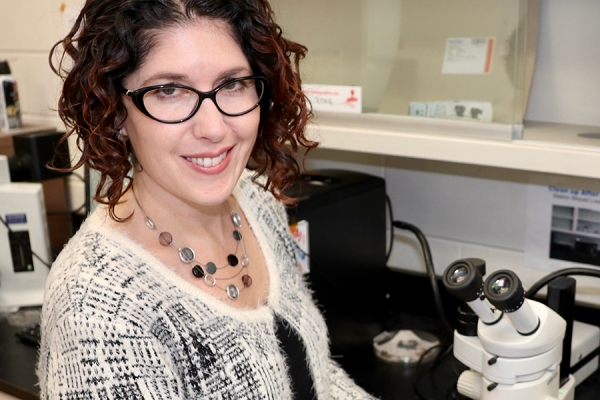

SSHRC Insight Grants
Dr. Randy Lippert of the Department of Sociology and Criminology was awarded a SSHRC Insight Grant for his project entitled, A Comparative Study of Condominium Governance, Law and Surveillance in Four North American Cities.
Using a range of qualitative methods across 20 condominiums, including 76 interviews with board members and commercial agents, Dr. Lippert will study condominium governance in four cities (Toronto, Vancouver, Chicago, and Detroit) in two countries with high concentrations of condos. Dr. Lippert’s research will significantly enhance understanding of condo governance, law, and surveillance, and their impact in varied political, economic and cultural contexts. Using a team approach that provides important student training opportunities this project will examine connections, commonalities, and differences, broadening current discussions of governance, law, surveillance, and housing. This project will also yield more comprehensive, focused, and up to date knowledge about this private residential realm and point to possible remedies and alternatives to emergent marginalizing arrangements.
Dr. Christopher Tindale from the Department of Philosophy was awarded a SSHRC Insight Grant for his project entitled, Argumentation and Extremism.
Situated within the internationally acclaimed Centre for Research in Reasoning, Argumentation and Rhetoric at the University of Windsor, and conducted by an established scholar in rhetorical argumentation together with PhD students from the interdisciplinary program in Argumentation Studies, this project brings the fruits of that research to bear on an issue of current concern: extremism. Over the course of this project, Dr. Tindale and his team will identify, refine, and develop argumentation tools to address extremist discourse by exploring the nature and meaning of extremism to refine current definitions and provide a concept that can apply to a broad range of cases, and through collection and analysis cases of argumentation that illustrate the managing of such kinds of extremism to propose tools for application to future cases.

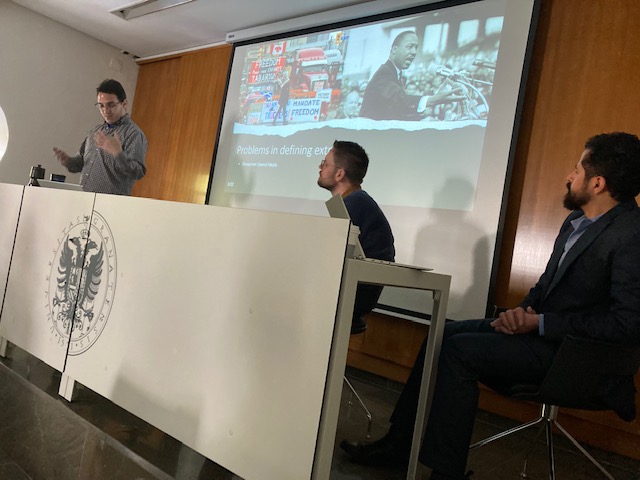
SSHRC Partnership Development Grant
 Drs. Sean Horton from the Department of Kinesiology, Thecla Damianakis from the School of Social Work, and Patricia Weir from the Department of Kinesiology were awarded a SSHRC Partnership Development Grant for their project entitled, Investigating the preferences of older adults as they experience new ways to take part in exercise programs in pandemic times: expectations and experiences defining quality participation.
Drs. Sean Horton from the Department of Kinesiology, Thecla Damianakis from the School of Social Work, and Patricia Weir from the Department of Kinesiology were awarded a SSHRC Partnership Development Grant for their project entitled, Investigating the preferences of older adults as they experience new ways to take part in exercise programs in pandemic times: expectations and experiences defining quality participation.
Motivating older adults to be physically active is a challenge that Canadian community organizations and service providers face daily. The COVID-19 pandemic has compounded this challenge. Social-distancing restrictions have interrupted instructor-led exercise programs for older adults. Some organizations have come up with alternate ways to engage clientele but are proceeding by trial and error. Adapted programs are scant and uptake is limited, raising many questions about program effectiveness and who they leave behind. Older adults, who have been deemed at risk and forced to isolate, have seen their options to remain active suddenly curtailed. As a result, they are further isolated, have fewer opportunities to become socially engaged, and risk mobility losses as well as decreased autonomy and well-being. There is an urgent need to understand what makes participation in exercise programs enjoyable for older adults to foster the sustained return of exercise programs that promote continued participation, engagement, and inclusion.
Working collaboratively with non-profit organizations and corporate providers of services to the older adult community, this multi-disciplinary research team will examine the peri-pandemic experience in southern Ontario, exploring what makes participation in exercise programs meaningful for older adults, particularly in a context of COVID-19 related restrictions and contingencies. In keeping with their partners' mission to promote the safety, well-being, and independence of their clientele, this team aims to build new knowledge about the characteristics of accessible, meaningful, and enjoyable exercise participation experiences; illuminate the strengths and limits of the various 'delivery methods' and contexts of exercise participation, while deepening our understanding of factors associated with quality participation; and inform partner policy and practices relating to instructor-led exercise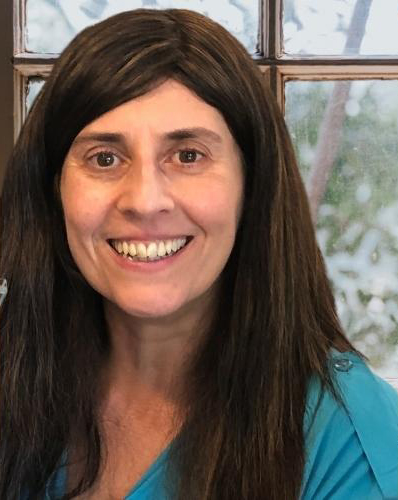 programs for older adults.
programs for older adults.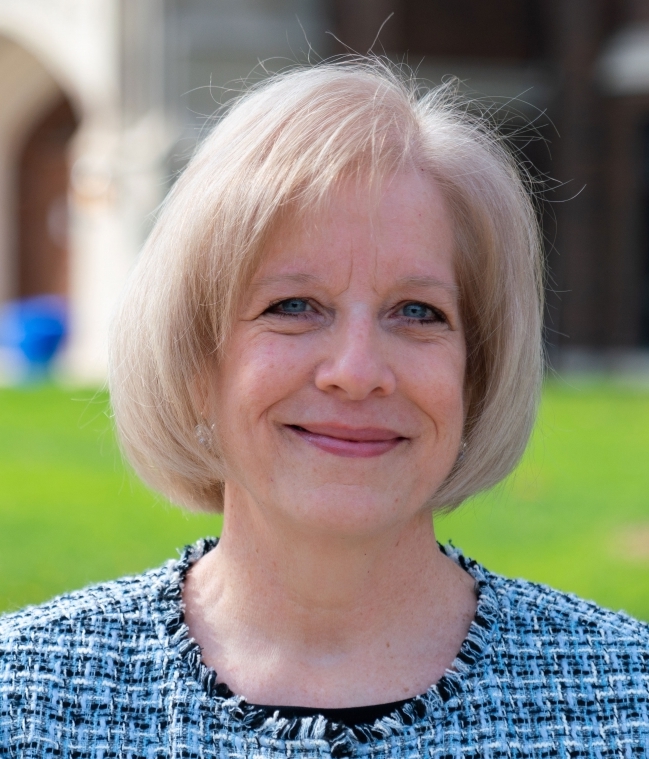
Significant Mitacs Accelerate Grants

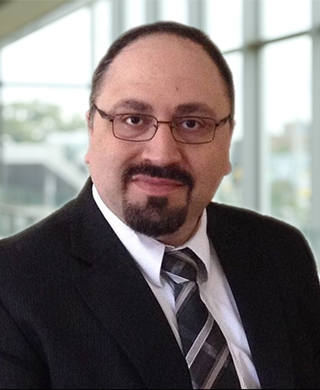 Drs. Rupp Carriveau from the Department of Civil and Environmental Engineering and Hanna Maoh from the Cross-Border Institute were awarded a significant Mitacs Accelerate Grant for their collaborative project entitled, Modeling the Grid Impact of Long Haul Electric Vehicles (LHEVs) in Ontario.
Drs. Rupp Carriveau from the Department of Civil and Environmental Engineering and Hanna Maoh from the Cross-Border Institute were awarded a significant Mitacs Accelerate Grant for their collaborative project entitled, Modeling the Grid Impact of Long Haul Electric Vehicles (LHEVs) in Ontario.
The electrification of the transportation sector is accelerating quickly. Early experience with small penetrations of electric passenger vehicles has revealed that while system wide capacity may be sufficient to serve these new loads, localized constraints can limit the ability of a utility to service new electric vehicle (EV) customers. Challenges like these will only be exacerbated as the size of the electric vehicle increases. Completely electrified long haul trucks will feature batteries that may be 10 to 18 times the capacity of that of a passenger car, significantly increasing charging loads and times. Mobile batteries of this size also introduce opportunities for innovative and valuable vehicle to grid services that could serve to extend grid limits at strategic locations and times; or help electricity customers shave demand peaks and avoid premium charges.
Drs. Carriveau and Maoh will assess potential grid impacts of completely electrified long haul electric vehicles (LHEVs) in Ontario. Archetype long haul routes of existing transport patterns across Ontario will provide a foundation for their analysis. Major transport routes and docking logistics will be established and critical variables, such as state of charge, charging rates, and charging times, will be parameterized to assess impacts on the size and shape of electricity demand at a distribution, and wider grid level. Drs. Carriveau and Maoh will conduct a regionalized case study examining the potential for LHEVs to function as Distributed Energy Resources (DERs) while serving in Ontario’s rapidly growing and electrically intensive Controlled Environment Agriculture (CEA) sector. This important initiative will illustrate a spectrum of prospective grid impact scenarios that will evolve stakeholder conversations on this topic.
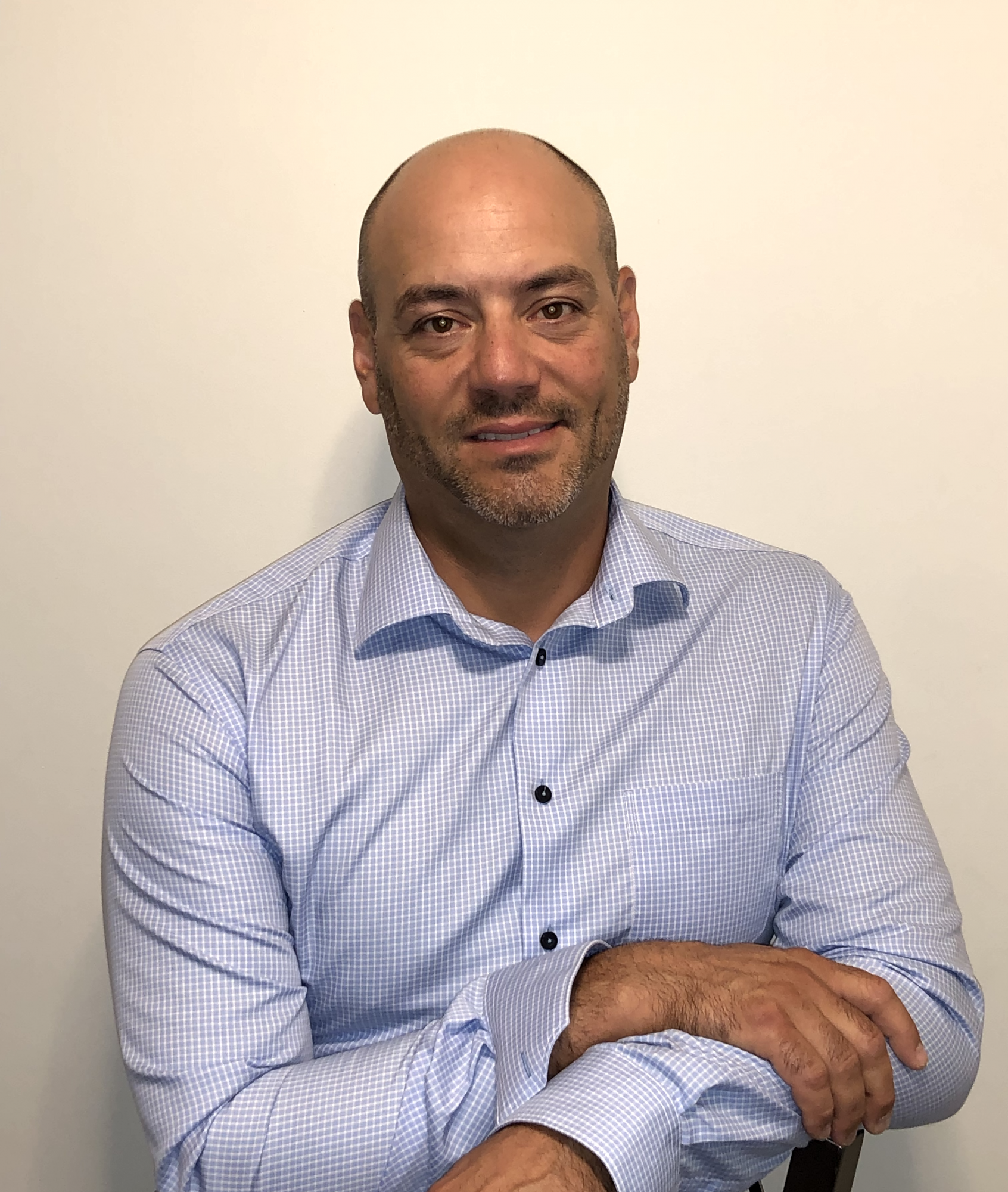 Dr. Joel Cort from the Department of Kinesiology was awarded a significant Mitacs Accelerate Grant for collaborative project entitled, Human Motion Library and Predictive Capabilities for Digital Human Ergonomics Simulation Solution.
Dr. Joel Cort from the Department of Kinesiology was awarded a significant Mitacs Accelerate Grant for collaborative project entitled, Human Motion Library and Predictive Capabilities for Digital Human Ergonomics Simulation Solution.
The ergonomics process of automotive manufacturers relies heavily on digital human simulation (DHS) technology, specifically "Jack" (Siemens PLM, Plano, TX). Advancements to "Jack" provide users with the ability to create workstations with fully dynamic human simulation capabilities. However, significant time is required to produce a single workstation-simulation (WSS).
Working collaboratively with Ford Motor Company of Canada, Dr. Cort aims to reduce the time necessary for WSS completion and improve on the accuracy of digital simulations. This will be accomplished by capturing motions of humans performing common manufacturing tasks, identified as difficult to simulate, allowing for the creation of a dynamic-motion-library (DML) that will be integrated into "Jack". Dr. Cort will also explore and expand understanding of human motion behavior to guide and augment posture/motion predictive capabilities.
Automotive manufacturers will benefit from this work, which will significantly reduce the time required to create WSS by automatically generating task specific motions from the DML, and provide predictive motions of common tasks. This will facilitate more accurate representation of assembly workstations in a digital environment so that they can be designed and implemented in real-world settings, reducing the risk of work-related musculoskeletal disorders (WMSD). Decreasing WMSDs and their associated costs will greatly increase the overall health of workers and benefit the economy. The HQP involved in this initiative will benefit from direct interaction with automotive partners, increasing their understanding of the automotive sector, creating potential partnerships to support their academic or professional futures, and developing valuable research and interpersonal skills that connect academia and industry.

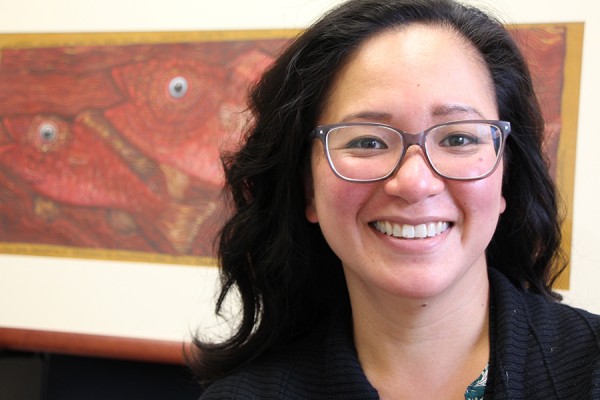 Dr. Catherine Febria from the Great Lakes Institute for Environmental Research was awarded a significant Mitacs Accelerate Grant for her collaborative project entitled, Assessment of freshwater mussel species at risk translocations due to river infrastructure works: A case study of Argyll Bridge and the Grand River.
Dr. Catherine Febria from the Great Lakes Institute for Environmental Research was awarded a significant Mitacs Accelerate Grant for her collaborative project entitled, Assessment of freshwater mussel species at risk translocations due to river infrastructure works: A case study of Argyll Bridge and the Grand River.
Infrastructure works across large rivers often require the translocation of aquatic species, including imperiled ones. There is limited evidence on the effectiveness of translocations, creating uncertainty around the likelihood of success for species recovery. Working in partnership with Dufferin Construction Company, which has been tasked with undertaking infrastructure works and species-at-risk translocations, Dr. Febria seeks to understand the impact of translocation on freshwater mussel communities in the Grand River in southwest Ontario, Canada. This initiative will determine the recovery of mussel communities post-translocation, and place them into context with other infrastructure projects involving unionid mussel translocations across the region. Dr. Febria’s team will collect relocation data associated with the Argyll Bridge reconstruction, and synthesize multivariate datasets to determine the success of translocation best practices. Dr. Febria and her team will also conduct further studies on mussel populations to understand relationships between environmental conditions and mussel health, as well as gather additional datasets from other infrastructure-related translocations to understand long-term recovery trajectories. Dr. Febria will engage local knowledge holders to understand the local history and importance of species-at-risk, including the Indigenous rights holders for the region. Ultimately, this work will deepen understanding of the ecology of freshwater mussels and their host-fishes, and advance best practices associated with river infrastructure projects implemented by our partners across Ontario and beyond.
 Dr. Daniel Mennill from the Department of Integrative Biology was awarded a significant Mitacs Accelerate Grant for his collaborative project entitled, Avian biodiversity in Earth’s most imperilled ecosystem, the tropical dry forest: Innovative strategies for conservation monitoring of migratory and resident birds.
Dr. Daniel Mennill from the Department of Integrative Biology was awarded a significant Mitacs Accelerate Grant for his collaborative project entitled, Avian biodiversity in Earth’s most imperilled ecosystem, the tropical dry forest: Innovative strategies for conservation monitoring of migratory and resident birds.
Biodiversity faces enormous challenges due to the effects of global climate change and anthropogenic disturbance. Birds are a group with high biodiversity and high sensitivity to environmental changes in almost all environments on Earth. Monitoring changes in bird population sizes is a critical activity for conservation researchers, allowing conservationists, stakeholders, and the general public to better track changes in biodiversity. In recent years, new monitoring techniques have created opportunities to better track both resident and migratory bird populations.
This initiative combines cutting-edge technologies in bioacoustic monitoring and the Motus wildlife tracking systems to study migratory and resident birds in an imperiled ecosystem: the tropical dry forest. Dr. Mennill and his team will survey migratory and resident bird populations using ground-level bioacoustic monitoring and acoustic recordings of migratory flight calls. At the same time, they will use the Canadian-developed and world-renowned Motus wildlife tracking system to monitor over-wintering movements of migratory birds, which will provide vital information on where these migrants are going and how their wintering movements impact biodiversity in tropical dry forests.
The findings of this project will provide critical information on the population biology, movement ecology, and behavioural biology of both year-round and migratory birds in the largest remnant of tropical dry forest, and provide a key connection between conservation efforts in Canada with those in Costa Rica. This research will have impacts for how we monitor and protect birds that migrate between Canada and the tropics, and how we conserve tropical ecosystems and the high biodiversity found there.
 Dr. Scott Mundle from the Great Lakes Institute for Environmental Research was awarded a significant Mitacs Accelerate Grant for his collaborative project entitled, Development of a quantitative framework for methane emissions from soil gas migration issues in the oil and gas sector.
Dr. Scott Mundle from the Great Lakes Institute for Environmental Research was awarded a significant Mitacs Accelerate Grant for his collaborative project entitled, Development of a quantitative framework for methane emissions from soil gas migration issues in the oil and gas sector.
Methods to quantitatively define gas migration volumetric releases for energy assets are not well developed. Additionally, geochemical approaches based on gas compositions and stable isotope ratios are widely used to identify gas migration issues. However, there are many environmental factors, including microbial activity, that complicate measurements and the reliability of the results used to interpret sources. Gas migration is a concern for contaminating shallow aquifers, contributing to greenhouse gas emissions, and, in extreme cases, present an asphyxiation/explosion hazard.
Methane has become a target for Alberta’s Oil and Gas industry due to the impacts of this greenhouse gas in the atmosphere. Dr. Mundle’s research will develop quantitative gas migration testing techniques and regulatory thresholds that address the complex nature of the multiple interacting variables that can confuse gas migration investigations. This study will focus on the development of in-situ field measurement technologies and instrumentation to characterize the variables that impact soil gas and isotope signatures for different environmental conditions. The results of the field approaches will be used to develop a multiple indicator matrix that can be used by industry to identify gas migration issues.
Cancer Research Society Operating Grants
 Dr. Munir Rahim from the Department of Biomedical Sciences as awarded a Cancer Research Society Operating Grant for his project entitled, Immunosurveillance of breast cancer by innate immune cells.
Dr. Munir Rahim from the Department of Biomedical Sciences as awarded a Cancer Research Society Operating Grant for his project entitled, Immunosurveillance of breast cancer by innate immune cells.
This graduate student research training initiative uses already established mouse strains, tumour cell lines, and standard scientific techniques for analysis. Gaining exposure to various scientific methods, trainees will examine immunological responses, cell and molecular biology, and cancer biology, leading to the publication of theses and manuscripts.
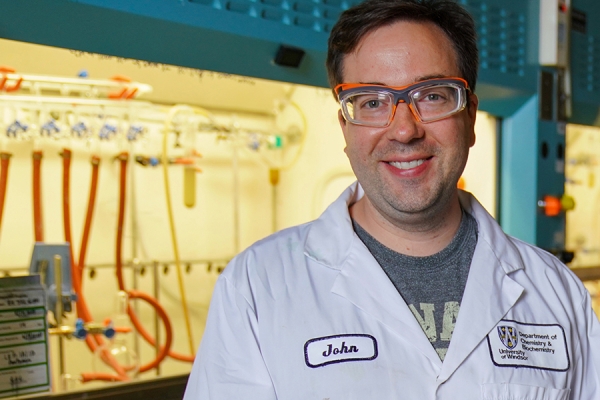 Dr. John Trant from the Department of Chemistry and Biochemistry was awarded a Cancer Research Society Operating Grant for his project entitled, Early identification of Neuroendocrine-like Prostate Cancer using Near-Infrared Light.
Dr. John Trant from the Department of Chemistry and Biochemistry was awarded a Cancer Research Society Operating Grant for his project entitled, Early identification of Neuroendocrine-like Prostate Cancer using Near-Infrared Light.
In 2020 alone, 23,300 Canadians were expected to be diagnosed with prostate cancer, and 4,200 more were expected to die from the disease. These statistics are despite improved survival rates resulting from new targeted therapies and prostate cancer-specific imaging agents. Prostate cancer generally begins as adenocarcinoma (PCa), a disease treatable with androgen deprivation therapy. Persistent treatment can result in the emergence of castration-resistant prostate cancer (CRPC), requiring second-generation androgen receptor-targeting agents. While initially successful, this second line of therapy often leads to the evolution of neuroendocrine prostate cancer (NEPC), characterized by aggressive androgen receptor-independent growth. Imaging tools capable of detecting NEPC emergence as treatment are needed to improve survival and prognosis becomes very poor as the tumour mutates. Unfortunately, these imaging tools do not exist. Through this project, Dr. Trant will develop a novel method enabling early identification of neuroendocrine-like prostate cancer using near-infrared light.
Immigration, Refugees and Citizenship Canada Service Delivery Improvements Grant
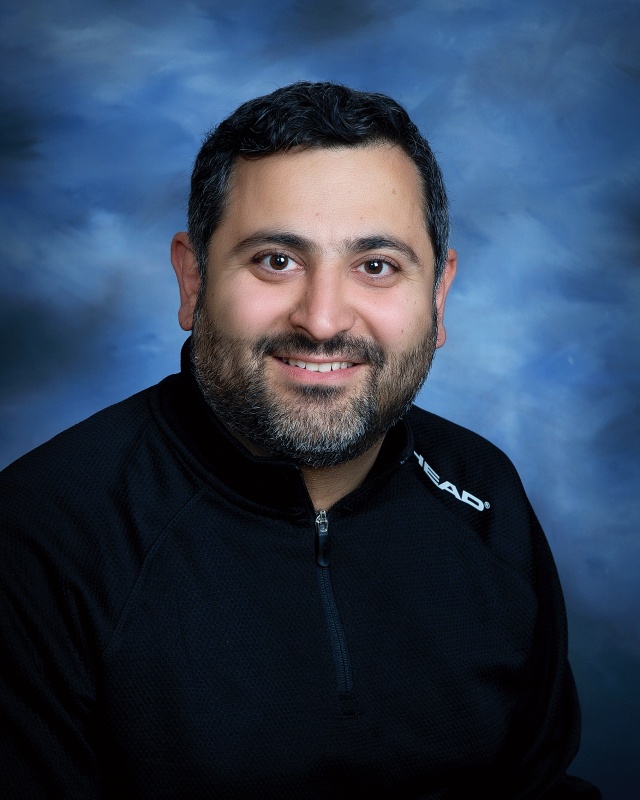 Dr. Ziad Kobti from the School of Computer Science was awarded an Immigration, Refugees and Citizenship Canada Service Delivery Improvement Grant for his project entitled, Artificial Intelligence: A Rapid Response Leveraging Newcomers’ Pathway to Settlement.
Dr. Ziad Kobti from the School of Computer Science was awarded an Immigration, Refugees and Citizenship Canada Service Delivery Improvement Grant for his project entitled, Artificial Intelligence: A Rapid Response Leveraging Newcomers’ Pathway to Settlement.
Canada’s recent announcement of increased immigration levels through to 2023 highlights our reliance on immigration to secure Canada’s future, and is indicative of the high stakes in ensuring secure and tailored tools that can effectively and efficiently onboard newcomers to Canada. As the sector is evolving, with exploration of hybrid service delivery models that can more precisely provide “the right information at the right time” to newcomers while providing flexibility to allow for both self-directed and supported options (professional led), the timing is right to deepen its investment in more sophisticated technologies.
This innovative project supports Settlement Sector Resilience and Adaptability through Social Research & Development, Building Evidence and Enhancing Anti-Racism Capacity.
National Research Council of Canada Digital Health and Geospacial Analytics Collaborative R&D Challenge Program Grant
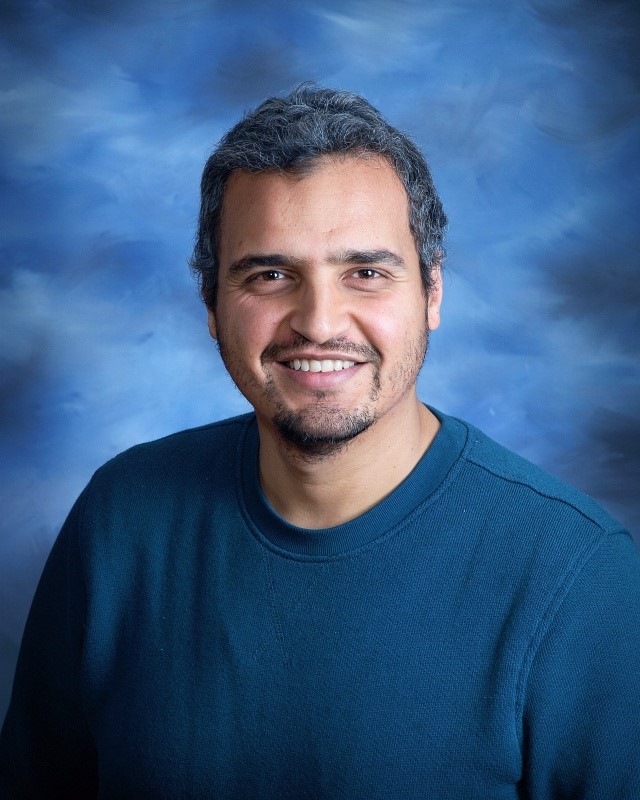 Dr. Sherif Saad from the School of Computer Science was awarded a National Research Council of Canada grant for his project entitled, A New Framework for Secure Predictive Healthcare Delivery through Federated Machines.
Dr. Sherif Saad from the School of Computer Science was awarded a National Research Council of Canada grant for his project entitled, A New Framework for Secure Predictive Healthcare Delivery through Federated Machines.
The last decade has witnessed tremendous progress in digital healthcare delivery. This has led to the collection or generation of huge amounts of data, some of which has been released to the public for researchers to advance and find new cures and treatments, and to develop smarter ways for healthcare delivery using machine learning (ML) and artificial intelligence (AI). It is expected that AI and ML will bring a paradigm shift in the future of next-generation healthcare systems. These next-generation healthcare systems will utilize AI and take advantage of inexpensive high-performance and cloud computing environments. However, machine learning and AI are data-hungry and data-driven technologies. This characteristic could potentially limit the utilization of AI in healthcare systems. The data challenge in digital healthcare delivery is about more than data availability and data quality. Healthcare data and medical data have specific security and privacy requirements that restrict ML adoption. Federated learning (FL) is an ML paradigm that could address data security and privacy restrictions in healthcare. However, applying FL in practice in healthcare requires a rigorous engineering approach that balances ML prediction quality and patient security and privacy.
This important initiative aims to develop a secure framework to enable FL at scale in healthcare systems.
American Chemical Society Petroleum Research Fund Grant
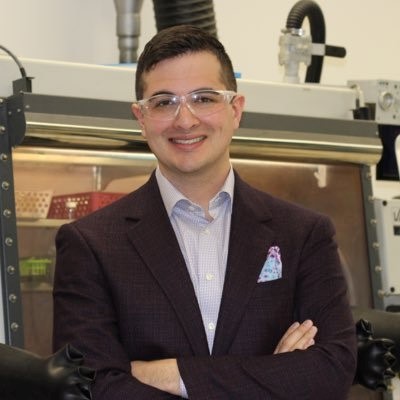 Dr. Marcus Drover from the Department of Chemistry and Biochemistry was awarded an American Chemical Society Petroleum Research Fund Grant for his project entitled, Expanding the Fluorination Toolbox.
Dr. Marcus Drover from the Department of Chemistry and Biochemistry was awarded an American Chemical Society Petroleum Research Fund Grant for his project entitled, Expanding the Fluorination Toolbox.
This project aims to contribute to the broader understanding of alkane fluorination using organometallic reagents with the ultimate goal of designing new catalytic inroads for alkane fluorination. From this foundation and with the development of a firm mechanistic footing, Dr. Drover seeks to contribute to the area of enantioselective fluorination as a means to access chiral fluoroorganics from hydrocarbons that result from petroleum products.

